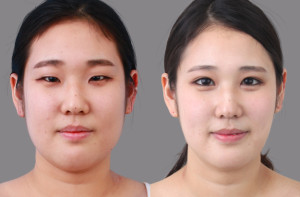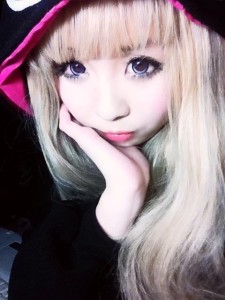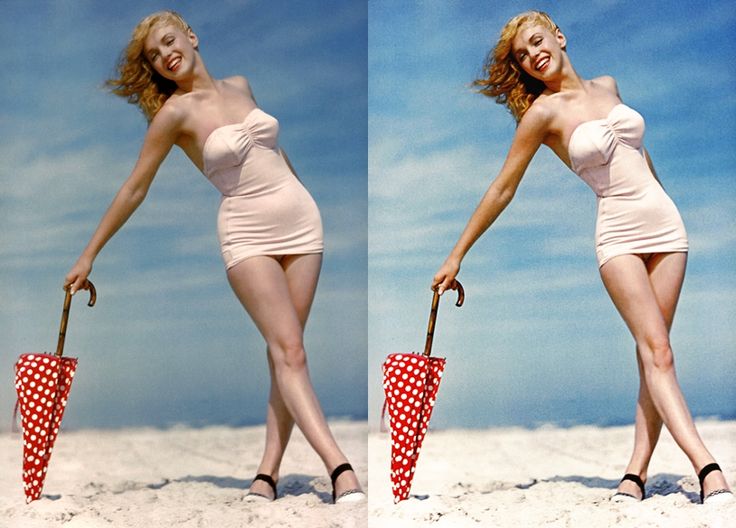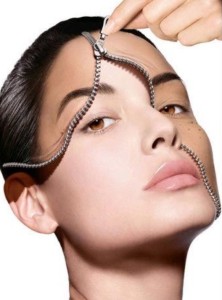“In 2012, more than 236,000 cosmetic procedures were performed on patients between 13 and 19, including more than 75,000 surgical procedures such as nose reshaping, breast lifts, breast augmentation, liposuction, and tummy tucks.”- Via Ourbodiesourselves.org
As startling as these statistics may be, they happen to be the new norm and the shocking reality of our time. And there is a deeper reality to plastic surgery with deeper truths underlying this rapidly growing movement.
 For instance, in South Korea, one of the leading procedures amongst the female population is the double-eyelid surgery. The rate of these have catapulted in South Korea as females are desperately trying to conform to Western beauty standards.
For instance, in South Korea, one of the leading procedures amongst the female population is the double-eyelid surgery. The rate of these have catapulted in South Korea as females are desperately trying to conform to Western beauty standards.
The double-eyelid surgery, otherwise known as blepharoplasty, creates a fold over the eyelid that isn’t usually a part of many Asian nationalities’ physical features. This surgery usually goes hand in hand with an epicanthoplasty, another surgery that aims to widen the shape of the eye.
Many people over the years have criticized plastic surgery. Heaps believe that it’s misleading as it alters the natural form of the face and carves out “ideal” features. Another opinion is that plastic surgery allows people to drift away from their cultures and embrace foreign features while looking down on their own.
It’s truly alarming when a culture that has existed for centuries and that has valued and passed down its beauty routines to hundreds and hundreds of generations suddenly has its traditions deemed ugly or not trendy enough.
 As an example, historians have proven that in early Korean beauty agendas, “crescent-shaped brows with no double eyelids” were the height of trends; comparing that to the 21st century’s ideals, this no longer applies. Another snippet about traditional Asian beauty codes states that “pupil, brow, and eye lashes should be black” and now colored contact lenses have almost become a necessity in many people’s daily routine.
As an example, historians have proven that in early Korean beauty agendas, “crescent-shaped brows with no double eyelids” were the height of trends; comparing that to the 21st century’s ideals, this no longer applies. Another snippet about traditional Asian beauty codes states that “pupil, brow, and eye lashes should be black” and now colored contact lenses have almost become a necessity in many people’s daily routine.
Another relevant example can be taken from African civilizations, some of the oldest and richest in history worldwide. In African traditions, dark skin, curvy bodies and coarse hair have been cemented deep in their culture and crowned as the epitome of beauty for many years on end. But sadly, these standards have been forced to shrink in size and adapt to Western beauty standards as well.
Yohi Mersha writes, “When it comes to looks, we, African women actually, are the first in brushing away those features from our faces and embrace the ‘modern’ image, which we think should be adopted. But, along the way, we only ended up at a fleck where self-recognition attains the impossible, our true beauty is hidden in our artificial hair dyed blond and our powder brushed face. Our inner beauty suffered a lot in the meanwhile. Like most women in the world caught up in the westernized beauty standards, African women are facing the struggle to achieve skinny figures, lighter skin, long and smooth hair. If our foremothers would look at our women that we crown African beauty queens these days, they would ask why those girls are underfed.”

But really, how much blame can we put on today’s youth for wanting to conform to foreign beauty standards and abandon, resent and loathe their own natural forms? With American and European looks constantly praised as the exemplar of beauty and with the media constantly attacking any other form, making it seem horrendous, undoubtedly the blame lies on many shoulders throughout our time.
 How many ads have we seen promoting creams and lotions that will “magically” bleach our wheat-colored skin to the desirable white hue? How many times have we seen Arab women repeatedly bleach and dye their hair blonde in order to accommodate white features and be seen as “sophisticated” and “appealing”? How many times have we seen adverts of Arabic products demonstrated on women with light complexions, blonde hair and blue eyes?
How many ads have we seen promoting creams and lotions that will “magically” bleach our wheat-colored skin to the desirable white hue? How many times have we seen Arab women repeatedly bleach and dye their hair blonde in order to accommodate white features and be seen as “sophisticated” and “appealing”? How many times have we seen adverts of Arabic products demonstrated on women with light complexions, blonde hair and blue eyes?
Many times over, we’ve heard Arab men fantasize about and romanticize white women. Time and time again, we’ve seen Arabs look at Western babies and call them “cute” and “beautiful” just because they have fair, golden locks, meanwhile looking down and ignoring the beauty of OUR children who inherited OUR genes.
How damaging is the media to the self-esteem of our young girls when they barely get to see their own people portrayed as “beautiful” but instead, they’re subconsciously taught to look up to women from other cultures.
The fantasy of Western beauty standards damages our culture in ways unimaginable, as when children who haven’t even reached the age of five consider them the height of beauty. When young girls look up to their mothers who are constantly stressing about spending too much time in the sun to prevent their skin from getting dark and wanting to stay as fair as possible. When children are taught from a young age that Westerners are better, smarter and prettier than they are.
It’s all these stereotypes that we think are harmless that actually end up sabotaging our children’s mentalities beyond repair. I don’t blame young men and women for desperately wanting to conform to Western cultures and standards — how else are they expected to gain self-confidence in a society that has constantly taught them that they’re ugly?
In my opinion, we shouldn’t criticize those who take refuge in plastic surgery or any other form-altering procedure. In a time like this, when almost every aspect of any culture that isn’t Western or European is attacked, disregarded and abhorred, it is no surprise that seemingly everyone is doing their best to whitewash themselves to supposedly elevate their place in society. I pray that future generations will unlearn these toxic ideas and learn to love, value and respect themselves, their civilizations and their traditions.
WE SAID THIS: Don’t miss Middle Easterners and North Africans Use #TheHabibatiTag Hashtag to Challenge Western Beauty Standards.



